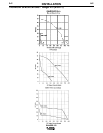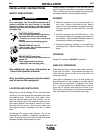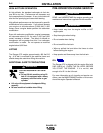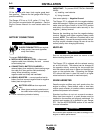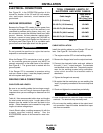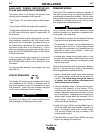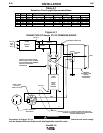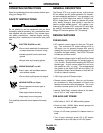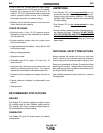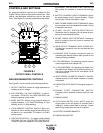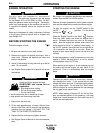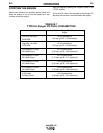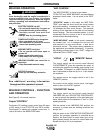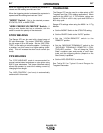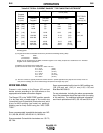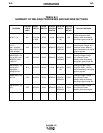
B-2
OPERATION
B-2
RANGER 275
• One 50 amp 120 V single phase AC dual voltage
power receptacle with two 50 amp circuit breakers.
Supplies up to 38 amps of 240 V AC and up to 76
amps of 120 V AC single phase auxiliary power per
side to separate branch circuits (not in parallel).
Allows easy connection to premises wiring.
• Welding and AC auxiliary power at the same time
(within machine total capacity).
OTHER FEATURES
• Overhead valve, V-twin, 20 HP gasoline engine.
Designed for long life, easy maintenance and excel-
lent fuel economy.
• Engine protection system shuts the engine down
with low oil pressure.
• Large maintenance-free battery. Group 58 with 435
cold cranking amps.
• Battery charging ammeter.
• Engine hour meter.
• Extended range 9 U.S. gallon (7.5 Imp. Gal., 34
liters) fuel tank.
• Automatic idler reduces engine speed when not
welding or drawing auxiliary power. This feature
reduces fuel consumption and extends engine life.
• Compact size fits crosswise in compact size pick-up
truck.
• Copper alternator windings for dependability and
long life.
• CSA approved.
RECOMMENDED APPLICATIONS
WELDER
The Ranger 275 provides excellent constant current
DC welding output for stick (SMAW) welding and for
TIG welding, and it offers constant voltage output for
DC semiautomatic wire feed welding.
GENERATOR
The Ranger 275 gives AC power output for medium
use demands.
LIMITATIONS
• The Ranger 275 is not recommended for any
processes besides those that are normally per-
formed using stick welding (SMAW), TIG welding
(GTAW), MIG (GMAW) welding and Innershield®
(FCAW) welding.
• The Ranger 275 is not recommended
for pipe
thawing.
• During welding, generator power is limited and out-
put voltages can drop. Therefore, DO NOT OPER
-
ATE ANY SENSITIVE ELECTRICAL EQUIPMENT
WHILE YOU ARE WELDING. See Table B.4 for
permissible simultaneous welding and auxiliary
power loads.
ADDITIONAL SAFETY PRECAUTIONS
Always operate the welder with the roof and case
sides in place as this provides maximum protection
from moving parts and assures proper cooling air flow.
Read and understand all Safety Precautions before
operating this machine. Always follow these and any
other safety procedures included in this manual and in
the Engine Owner’s Manual.
Only qualified personnel should install, use, or service
this equipment.



